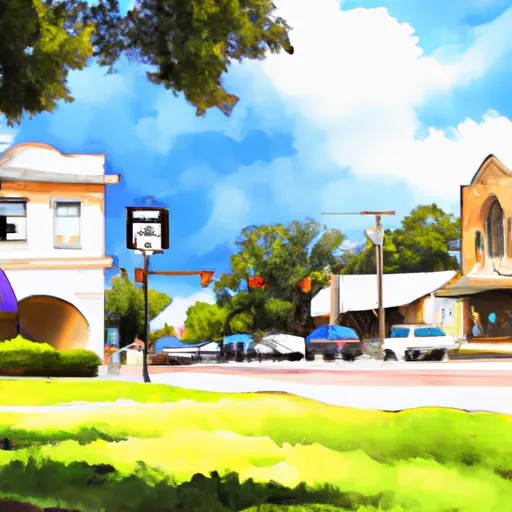-
 Snoflo Premium
Snoflo Premium
Get unlimited access to all our content
With no Ad interruptions! - Start Your Free Trial Login with existing account
Carthage
Eden Index
Climate
7.9
•
Recreation
1.9
•
Community
2.3
•
Safeguard
4.4/10

Carthage, Texas, is situated in the northeastern part of the state and experiences a humid subtropical climate with hot, humid summers and mild winters. The hydrology constituents of the town include the Sabine River, Lake Murvaul, and several creeks and streams. Outdoor recreation opportunities in Carthage include fishing and boating at Lake Murvaul, hiking and camping at Martin Creek Lake State Park, and golfing at the Carthage Country Club. The town is also home to the Texas Country Music Hall of Fame and hosts the annual Texas Country Music Hall of Fame Show and Induction Ceremony.
What is the Eden Index?
The Snoflo Eden Index serves as a comprehensive rating system for regions, evaluating their desirability through a holistic assessment of climate health, outdoor recreation opportunities, and natural disaster risk, acknowledging the profound impact of these factors on livability and well-being.
Climate Health Indicator (CHI): 7.9
Carthage receives approximately
1286mm of rain per year,
with humidity levels near 89%
and air temperatures averaging around
19°C.
Carthage has a plant hardyness factor of
8, meaning
plants and agriculture in this region tend to thrive here all year round.
By considering the ideal temperature range, reliable water supplies, clean air, and stable seasonal rain or snowpacks, the Climate Health Indicator (CHI) underscores the significance of a healthy climate as the foundation for quality living.
A healthy climate is paramount for ensuring a high quality of life and livability in a region, fostering both physical well-being and environmental harmony. This can be characterized by ideal temperatures, reliable access to water supplies, clean air, and consistent seasonal rain or snowpacks.
Weather Forecast
Streamflow Conditions
Sabine
Area Rivers
Sabine
Snowpack Depths
Sabine
Reservoir Storage Capacity
Sabine
Groundwater Levels
Recreational Opportunity Index (ROI): 1.9
The Recreational Opportunity Index (ROI) recognizes the value of outdoor recreational options, such as parks, hiking trails, camping sites, and fishing spots, while acknowledging that climate plays a pivotal role in ensuring the comfort and consistency of these experiences.
Access to outdoor recreational opportunities, encompassing activities such as parks, hiking, camping, and fishing, is crucial for overall well-being, and the climate plays a pivotal role in enabling and enhancing these experiences, ensuring that individuals can engage in nature-based activities comfortably and consistently.
Camping Areas
| Campground | Campsites | Reservations | Toilets | Showers | Elevation |
|---|---|---|---|---|---|
| Lake Tejas City Park | None | 226 ft | |||
| Rollover Pass | 40 | 3 ft | |||
| Bouton Lake | 7 | 144 ft | |||
| Village Creek State Park | 41 | 36 ft | |||
| Magnolia Ridge - Town Bluff Reservoir | 40 | 90 ft | |||
| Boykin Spring | 25 | 220 ft | |||
| Sandy Creek - Town Bluff Reservoir | 70 | 112 ft | |||
| Campers Cove - Town Bluff Reservoir | None | 93 ft | |||
| Martin Dies State Park | 225 | 88 ft | |||
| Winnie - Stowell County Park | None | 22 ft |
Nearby Ski Areas
Catastrophe Safeguard Index (CSI):
The Catastrophe Safeguard Index (CSI) recognizes that natural disaster risk, encompassing floods, fires, hurricanes, and tornadoes, can drastically affect safety and the overall appeal of an area.
The level of natural disaster risk in a region significantly affects safety and the overall livability, with climate change amplifying these risks by potentially increasing the frequency and intensity of events like floods, fires, hurricanes, and tornadoes, thereby posing substantial challenges to community resilience and well-being.
Community Resilience Indicator (CRI): 2.3
The Community Resilience Indicator (CRI) recognizes that education, healthcare, and socioeconomics are crucial to the well-being of a region. The CRI acknowledges the profound impact of these elements on residents' overall quality of life. By evaluating educational resources, healthcare accessibility, and economic inclusivity, the index captures the essential aspects that contribute to a thriving community, fostering resident satisfaction, equity, and social cohesion.

